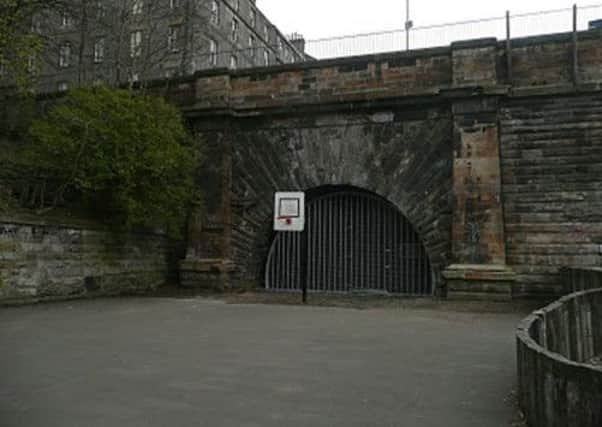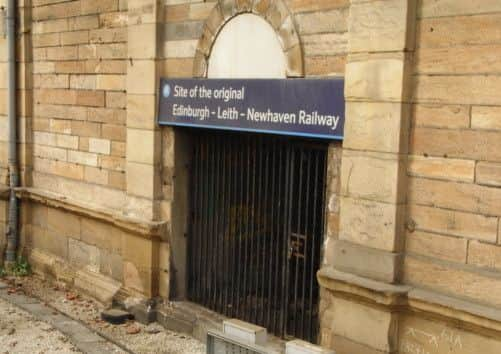Lost Edinburgh: The Scotland Street Tunnel


Construction on the Scotland Street Tunnel began during the early 1840s. The tunnel would help to forge a direct link from Canal Street Station (later renamed Waverley Station) to Granton and beyond. Engineers Thomas Grainger and John Miller had been charged with an incredibly tough task. Not only would they be forced to tunnel deep through three quarters of a mile of solid igneous rock, but the proposed route, underneath St. Andrew Square, Dublin Street and Scotland Street, would take in a steep gradient of 1 in 27. Such a sharp incline required the use of a stationery engine to cable-haul the trains up the slope towards the terminus at Canal Street. At a cost of over £100,000 the tunnel was officially opened on 17th May 1847.
Despite the huge amount of money and effort to complete it, Scotland Street Tunnel was abandoned in 1868 after only 21 years of operation. The North British Railway Company, after completing a takeover of the tunnel’s original operators, had opened an alternative route that more efficiently served the areas of Trinity and Granton from the city centre. Accessed now only from the north, Scotland Street Station continued life as a coal depot but its tunnel to the south was now officially closed.
Advertisement
Hide AdAdvertisement
Hide AdIn 1887 the tunnel’s northern portal at George V Park was converted into a cultivation facility by the Scottish Mushroom Company. A short section of track leading into the portal remained so that fertiliser could be easily transported into the facility. This practice of growing mushrooms on the site continued intermittently for a number of decades but ceased in 1929.


During the Second World War the tunnel was utilised yet again. At a depth of 50ft below street level in places, Scotland Street Tunnel was seen as the perfect location to establish an emergency control centre and bomb shelter in the event of an air raid attack. Bunkers were installed with access to fresh water and featured drainage systems and electric lighting. Up to 3,000 people could be protected within the tunnel at any one time. Many building remains from its time as Edinburgh’s “biggest and safest” air raid shelter are still in evidence today.
In the post-war years the tunnel has mostly lain dormant. It was used briefly in 1948 when a visiting Edinburgh University professor conducted a series of natural radiation experiments. In the 1960s it became a car storage facility for Cochranes Garages - though this reportedly ended abruptly when a group of youths broke in and started a fire causing considerable damage.
Any lingering hopes of ever completely reopening the passageway for public use were dealt a significant blow in 1983 when the southern portal linking the tunnel to Waverley Station was demolished during the construction of the new Waverley Market. A narrow ventilation pipe is now the only visible indication of its existence at its southern end. The northern portal is extant, albeit fenced off, and can still be viewed today close to the entrance of George V Park. Across the park, a little further north along the old line to Trinity, the much shorter Rodney Street Tunnel has recently been opened up as a pedestrian and cycle path.
Today Scotland Street Tunnel has become a curious and largely-forgotten railway relic, but its story is fascinating nonetheless. This short passage by Robert Louis Stevenson provides a captivating glimpse back to the days when the tunnel was in operation: “The Scotland Street Train Station, The sight of the train shooting out of its dark maw with the two guards upon the brake, the thought of its length and the many ponderous edifices and thoroughfares above, were certainly things of paramount impressiveness to a young mind.”